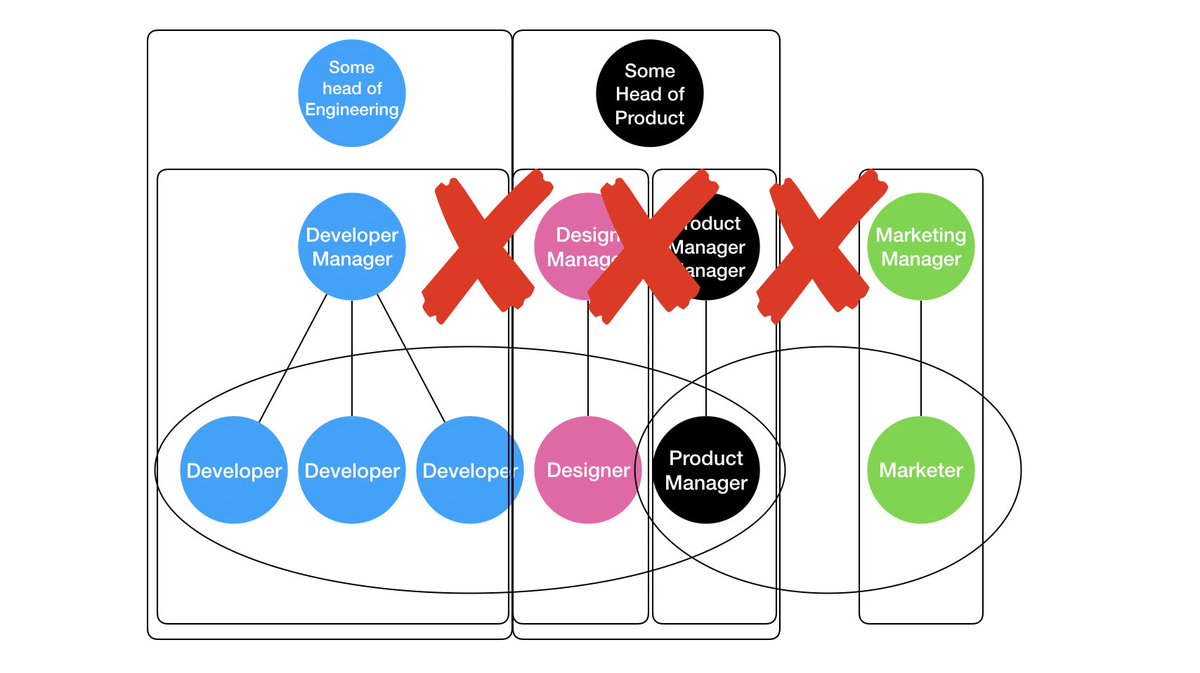
Here’s a trap I’ve noticed leaders falling in to. And it can be tough to untangle.
People bring problems to them. But not many people ... like 1-2% of the company. So they walk away believing it is a small problem ... “I need to hear from others”.
What is going on? 👇 (1/n)
People bring problems to them. But not many people ... like 1-2% of the company. So they walk away believing it is a small problem ... “I need to hear from others”.
What is going on? 👇 (1/n)
What determines whether ppl speak up?
Awareness
Awareness of impact on others
Perceived impact/severity
Sense of urgency
Sense of safety
Skill in providing feedback
Confidence that org will respond
Perception that issue is being addressed
Why does this matter? 👇 (2/n)
Awareness
Awareness of impact on others
Perceived impact/severity
Sense of urgency
Sense of safety
Skill in providing feedback
Confidence that org will respond
Perception that issue is being addressed
Why does this matter? 👇 (2/n)
Take a newcomer to the company.
Newcomer sees the problem. But...
They aren’t aware of impact
Low sense of urgency
Don’t interact much outside their team
Believe something is being done about it
Less confident about navigating org
well, they don’t speak up 👇 (3/n)
...
Newcomer sees the problem. But...
They aren’t aware of impact
Low sense of urgency
Don’t interact much outside their team
Believe something is being done about it
Less confident about navigating org
well, they don’t speak up 👇 (3/n)
...
Another scenario.
An employee has seen repeated cycles of feedback over the years, and no tangible action. They lack confidence org will respond. They’ve figured out how to work around the problem.
“I guess that’s just the way it is”
Well, they don’t speak up 👇 (4/n)
An employee has seen repeated cycles of feedback over the years, and no tangible action. They lack confidence org will respond. They’ve figured out how to work around the problem.
“I guess that’s just the way it is”
Well, they don’t speak up 👇 (4/n)
Or
Imagine that most retrospectives are local. People don’t really get to hear open feedback from across the org. So they themselves sit around wondering if it is “just me”.
Or mentioning X is seen as “bringing problems not solutions...”
Well, they don’t speak up 👇 (4/n)
Imagine that most retrospectives are local. People don’t really get to hear open feedback from across the org. So they themselves sit around wondering if it is “just me”.
Or mentioning X is seen as “bringing problems not solutions...”
Well, they don’t speak up 👇 (4/n)
The company runs a regular engagement survey and things seem on the up and up. There’s qual feedback (only a small group of ppl review it). But there has been a drop in participation.
Well, the survey isn’t representative. It is a sample of ppl willing to reply 👇 (5/n)
Well, the survey isn’t representative. It is a sample of ppl willing to reply 👇 (5/n)
Or ... imagine a scenario where feedback passes “up the chain” through a series of managers. The managers respect the feedback, but water it down (a bit) with each hop.
They are worried it might reflect negatively on them...
Well, the feedback gets watered down 👇 (6/n)
They are worried it might reflect negatively on them...
Well, the feedback gets watered down 👇 (6/n)
You see the issue here.
1 to 2% of a company mentioning X, could very well be a signal of much larger (and more important, and more urgent) issue.
So...# of ppl raising X, is rarely a good indicator.
Dig deeper (7/end)
1 to 2% of a company mentioning X, could very well be a signal of much larger (and more important, and more urgent) issue.
So...# of ppl raising X, is rarely a good indicator.
Dig deeper (7/end)
• • •
Missing some Tweet in this thread? You can try to
force a refresh









